Deliver an interactive user experience through a System of Engagement paired with the System of Record
The landscape of industrial data is still a black box, complex and diverse data types are difficult to unify in a way your teams can understand. Industrial data is unique in the volume of time series data, the wide spectrum of unstructured data (images, 3D models, documents, drawings, etc.), and the sheer number of sources (Historians, MES, QMS, IoT, etc.) that generate and store data. When solving site level and enterprise industrial use cases, breaking down data silos is not enough. Teams and people need an intuitive way to understand which time series connects to which equipment and what is upstream and downstream of that equipment in your operation. Unifying disparate operational data only delivers business impact when it is contextualized with industrial domain expertise, and available through a simple, interactive user experience.
Industrial organizations have solved many enterprise-level use cases around customer experiences, finance, and supply chain with their System of Record (SoR), such as a data lakehouse, a data warehouse, or a data cloud. The SoR already contains finance and accounting, supply chain, sales, and inventory management data, and the desire to leverage the SoR to solve site-level, operational use cases such as asset performance management, production optimization, or EHS (environment, health, and safety) is logical. If the relevant operational data was added to the SoR, it could then be extended to solve operational use cases. If only it could be this simple!
In reality, the site-level users of operational data: subject matter experts (SMEs), production engineers, operations, maintenance, and reliability teams, have unique, real-time needs that require simple access to industrial data in a performant and interactive way. To meet these needs, these users require a System of Engagement (SoE) to drive high-quality, AI-powered decisions that can leverage the existing SoR information and enrich it with site-specific data that is absent and difficult to incorporate into a SoR.
Before going any further, it is important to level set the differences between a System of Record and a System of Engagement.
How do you define a System of Engagement and a System of Record?
While both an SoR and an SoE play crucial roles in an industrial organization's technology landscape, they serve different purposes and handle different data types. SoRs excel when working with structured data and are the trusted, authoritative source for essential business information. On the other hand, SoEs prioritize user engagement and provide dynamic interfaces for interactions between the organization and its stakeholders. Below is a deeper comparison between a SoR and a SoE, highlighting the tailored needs of solving operational use cases.
| System of Engagement for industrial operations | System of Record | |
|---|---|---|
| Purpose | Designed for industrial environments where real-time data is needed for decisions, planning and operational actions. Interactive-level user-friendly experience. Self-service and automation to help users quickly access the data they need. Mobile-friendly. | Centralized repository that stores and manages primarily structured data. Authoritative source of truth for an organization's critical data, such as customer information, financial transactions, inventory levels, and other essential business data. |
| Industria Use Case Examples |
|
|
| Common Data Types | Operational Data
| IT Data
|
| Users |
|
|
| Exploring Data | Data is contextualized into an industrial knowledge graph, available for users and AI to search with natural language | Database schemas are used to define how data is organized, stored, and related and databases are linked through identifiers |
| User Access | User-friendly and accessible through various devices, such as web browsers or mobile apps. Supports both field and remote work. | Tightly controlled and restricted to authorized personnel to ensure data integrity and security. |
To summarize, a SoR and a SoE offer unique benefits with the clearest differences outlined when focused on the business use case and the end users. While many have already invested in an SoR, pairing this with an SoE can unlock new operational use cases that require an interactive-level user experience. To provide specific examples of what an SoE should deliver, we can review why Cognite’s core product, Cognite Data Fusion®, is a trusted SoE for some of the largest energy, manufacturing, and power companies in the world.
As a System of Engagement, how does Cognite Data Fusion® solve operational use cases at scale?
For industrial operators to solve operational use cases using a SoE, organizations must unify disparate operational data, contextualize it with industrial domain expertise, and make it available through a simple, interactive user experience.
Here are some of the key requirements to solve operational use cases at scale:

An SoE needs to access all industrial data. Many SoR solutions can combine IT and engineering data (think Asset Information solutions). Cognite Data Fusion® is unique in its ability to connect OT, IT, and engineering data with pre-built extractors into common systems to reduce the effort to connect voluminous time series OT data. Cognite Data Fusion’s highly optimized time series database provides performant recall for users.
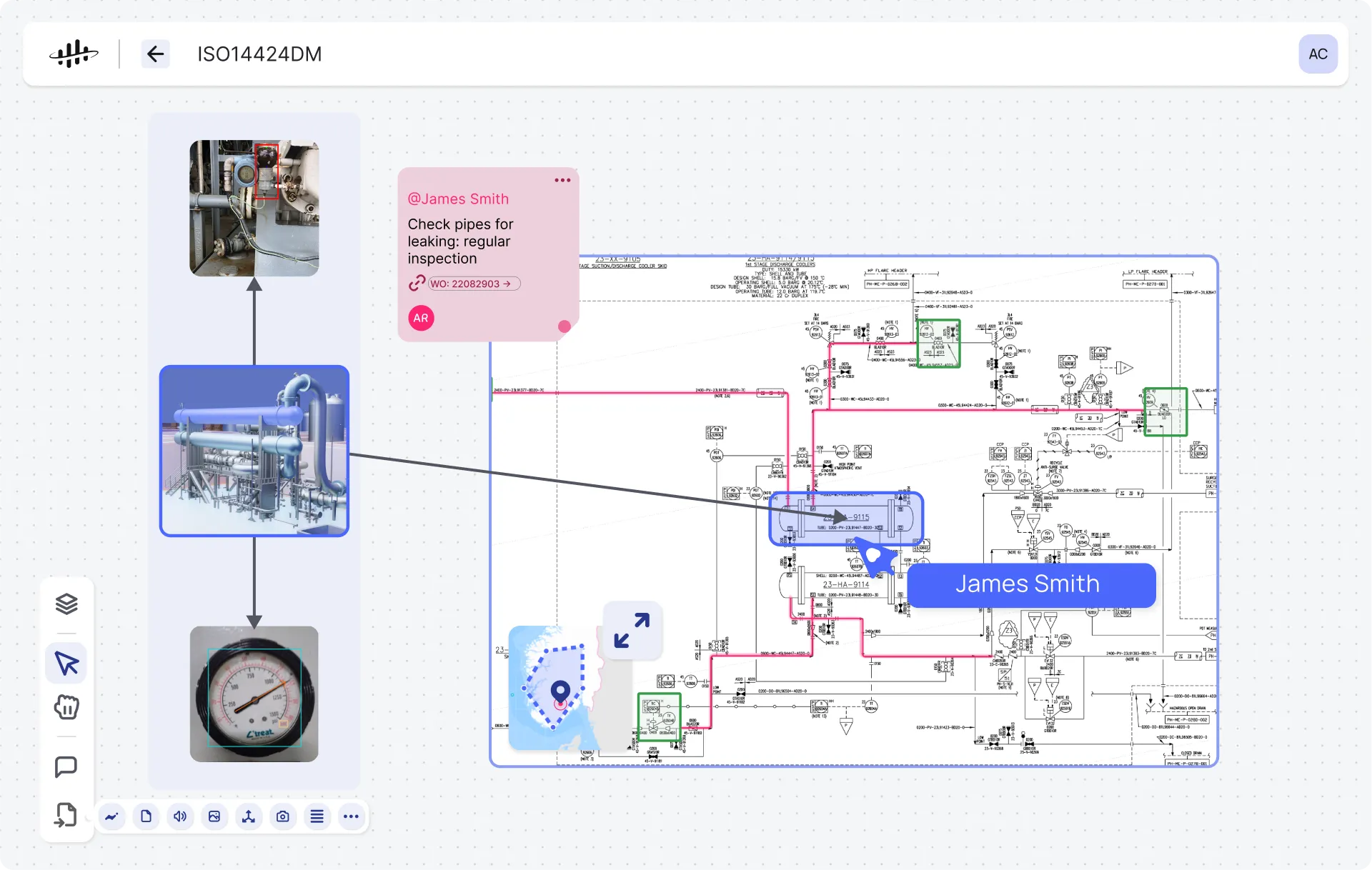
Data contextualization is the process of establishing meaningful relationships between highly disparate industrial data types to help users find and utilize relevant data across the operation. Too often, the data contextualization process is manual, requiring hundreds of hours to understand how time series data from the historian maps to the assets in the ERP asset hierarchy and how open work orders map to equipment and where that equipment exists in the process. Cognite Data Fusion's unique ability to automate this process with AI-based algorithms can shorten the data contextualization process from months to days.
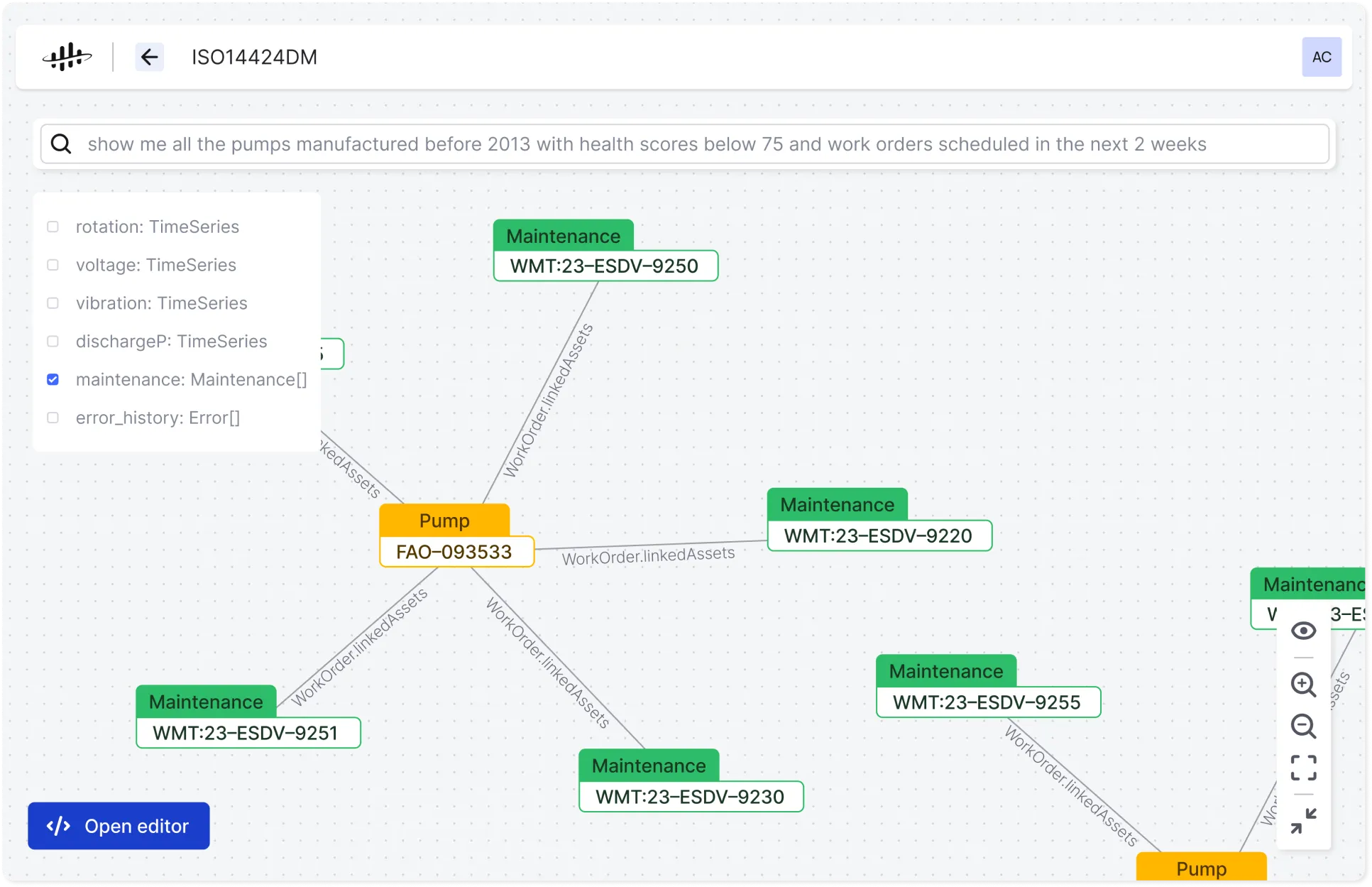
An industrial knowledge graph provides an additional metadata layer to navigate relationships for both humans and generative AI to make sense of industrial data. An industrial knowledge graph is the output of data contextualization and represents the connections between the many data types. This approach avoids the effort required to create schemas when using data from a data lake.
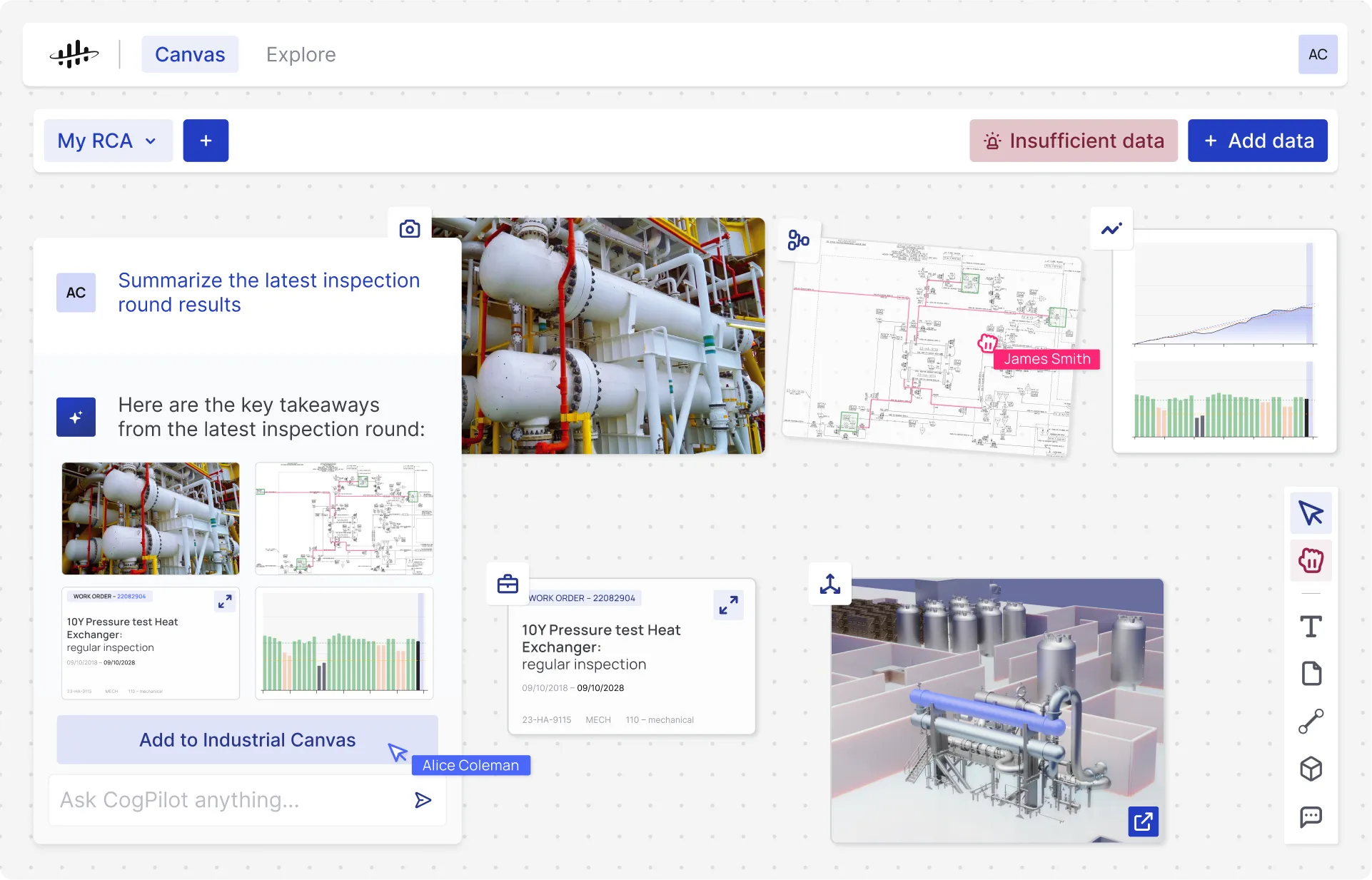
The most promising example of an interactive user experience is Cognite Data Fusion’s Industrial Canvas. Truly delivering simple access to all industrial data in a single workspace requires a unique way to leverage contextualized data. Users deserve a way to work with live sensor data, interactive engineering diagrams, images, 3D models, and more within a visual workspace where they can explore data in context, perform root cause analysis, and collaborate by tagging other users in an open, free-form environment.
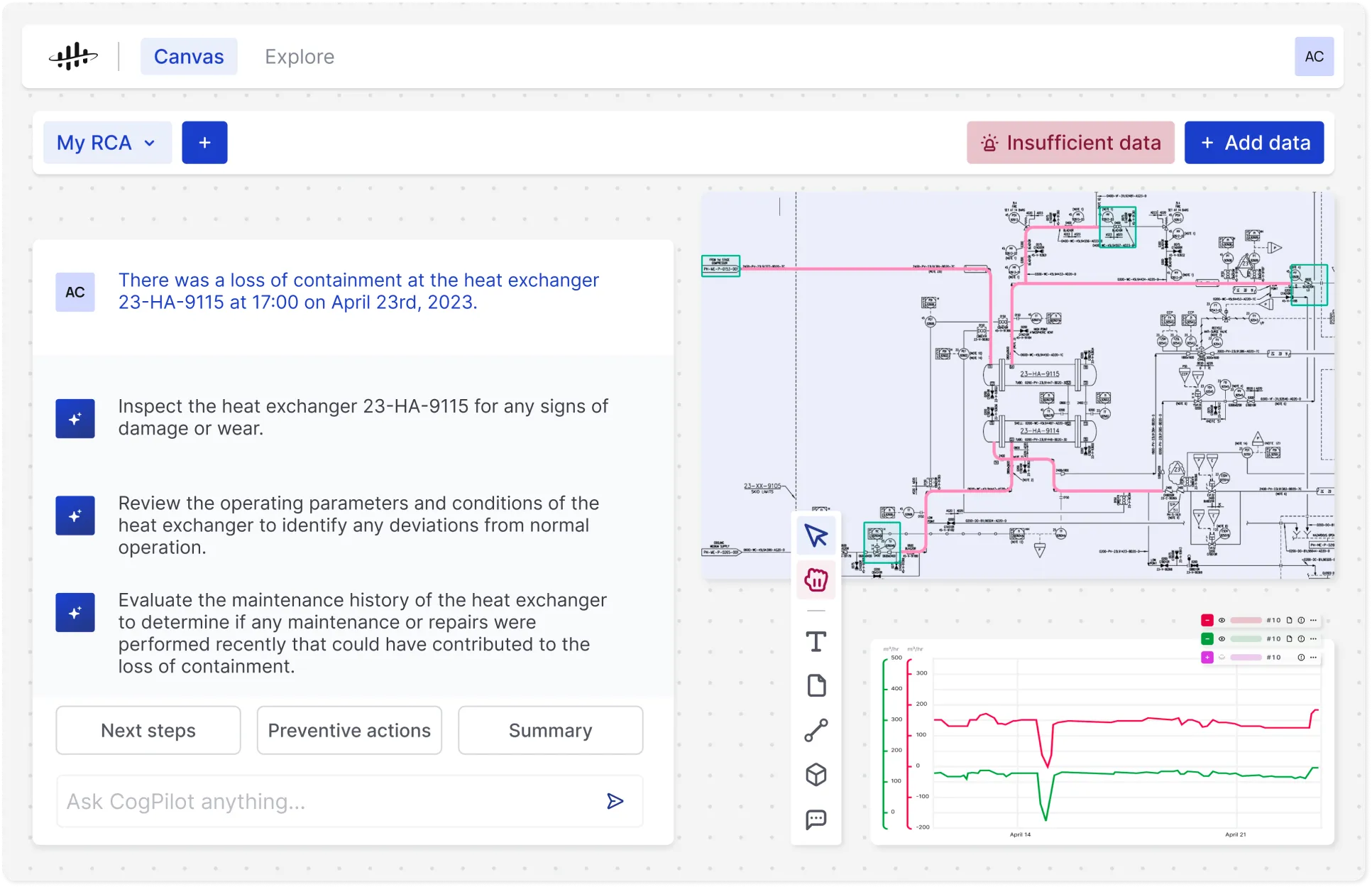
Generative AI further enhances this experience by enabling search in natural language and even providing recommendations and summaries of information and drawings. SMEs can gather, summarize, and generate insights orders of magnitude more efficiently. Users can have a generative AI copilot to recommend the next steps for workflows like root causes analysis.
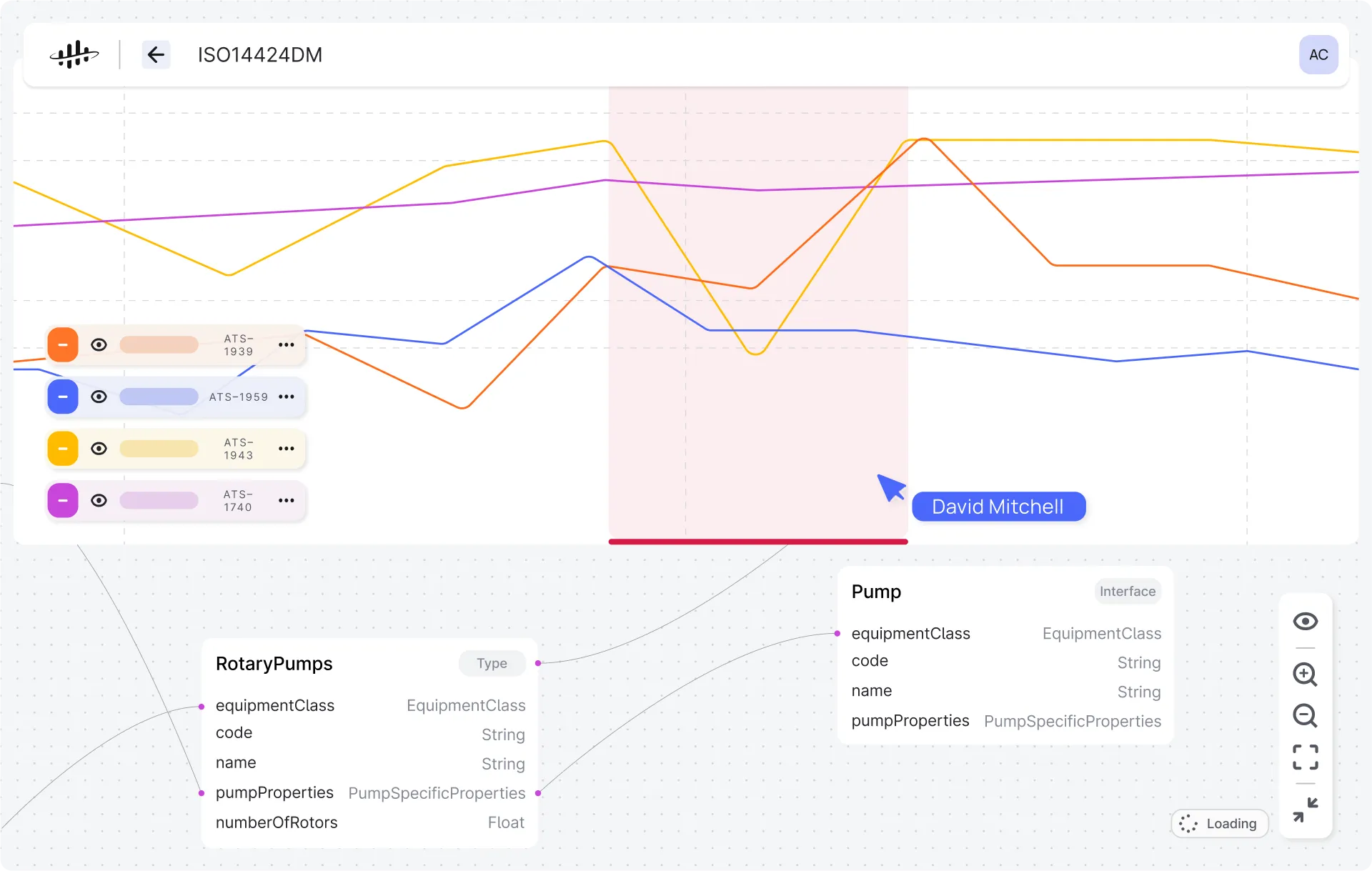
In addition to simple access to data, users must be able to generate insights to analyze what has happened (root cause analysis) and what is currently happening (processes are running outside of steady state). Cognite Data Fusion® can combine multiple sources of data—time series, events, and work orders—into a single view with an industrial data science library in a no-code environment to properly analyze underperforming assets and processes. This knowledge must be easy to share across the organization, to set alerts for future occurrences, and to reference. They cannot live in offline spreadsheets that require manual data dumps and updates.
While these requirements are not exhaustive, they illustrate how Cognite Data Fusion®, as an SoE, prioritizes the needs of SMEs, production engineers, operations, maintenance, and reliability teams.
Is Cognite Data Fusion intending to replace my SoR?

Cognite Data Fusion®, and more broadly any SoE, is not intended to replace a SoR. Instead, it complements the existing technology stack. Operational use cases require an interactive-level user experience to make timely decisions using diverse and complex OT data that doesn’t reside in an enterprise SoR today. An SoE can unify complex OT data with data that already resides in a centralized data lake, data warehouse, or data lakehouse. In addition, any data or insights generated with an SoE can be written to the SoR, providing even more value to this source of truth. By leveraging both technologies, the SoR is enriched and maintains its authoritative, trusted role in the organization, and the SoE can unlock new, real-time operational use cases.

